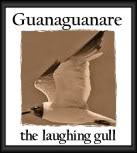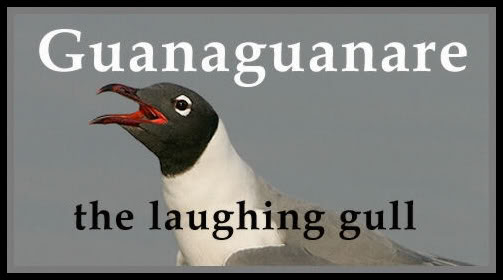Excerpts: 1 | 2 | 3 |4 | 5 | 6 | 7 | 8
TITLEA Sketch of Trinidad: The Canadian Mission and the opening of Presbyterian College in San Fernando, Trinidad by Alice Clark. Ottawa: Hope and Company, Stationers and Printers, 1892.
Previous
THE FIRST SABBATH IN TRINIDAD.
Sabbath, January 3rd, was a very interesting one to us in San Fernando. In the early morning, Rev. K. J. Grant and his assistant, Rev. Lal-Bihari, went out about three miles from the Central Station, and conducted service in Hindostani, and a similar service in the hospital, a few miles distant. At 11 a.m., the service was held at the central church. We 4 were present, and will not soon forget the original Hindi hymns. They sang with a weird but solemn cadence; they all appeared to be very attentive and devout. The congregation was composed of about 150 Hindus, within reach of the church. They were clothed chiefly in the peculiar garb of India—the veil (Orhrnee), the petticoat (Ehanghera), and bodice(Jullah), in many brilliant colours. Some of the women had a large number of silver bracelets and armlets on their arms; ear and nose rings, ornaments for the hair, necklaces, and bangles for the ankles. Before the close of the service, Rev. G. M.
Page 17
Clark was requested to address them, which was quickly interpreted into Hindustani, by one of the many clever scholars; afterwards they were asked to express their welcome to us, in coming so far to see them, and to bid them God speed. To our surprise, they all rose and made their salaams to us, and we received them, as their unanimous and hearty welcome. Then they were invited to come forward and be introduced to us by name, we both shaking hands with them individually. It was a scene which moved us very much. The Sabbath-school was held in the afternoon, composed of the young Hindus and Chinese, in all about 210, under twenty or more intelligent native teachers. After the International lesson for the day, severa1 were examined on review of the lesson for 1891. As an example, I may tell you of five little girls, Hindus and Chinese, repeating distinctly the 52 titles and Golden Texts of the lessons in English, without missing a word, which was truly, no small effort for little ones under nine years of age. I think some of our Sabbath-schoo1s in Canada will have to study the Lessons better, or they cannot compete with these dark-eyed, smiling faces of the Hindi. A number of young men in the Bible-class were examined in the “Shorter Catechism”. Answers were given to the most difficult questions, in a clear and intelligent manner, without an error, equal, if not superior to any such examination we have ever heard. Mr. Grant and his assistant were again off to hold services in two other estates, four or five miles distant. Mr. Clark conducted the evening service in English, in the Susamachar church, to a very attentive, and it may be said, a better educated assembly of Asiatics, as they have been trained in the Mission schools. The Managing Committee
Page 18
with the exception of Mr. Geddes Grant, consists of Asiatics, who conduct all the outward affairs of the church with ability, and in a thorough business-like way. Thus ended our first Sabbath in Fernando, and may say, never did we spend a more interesting day, as we observed the wonderful changes God has wrought in the last 25 years, through the very earnest and indefatigab1e efforts of our beloved. We hope to see their work more in detail, as we visit the varied school-houses in which the young East Indians are receiving a very thorough education. Quite a number of them are employed as interpreters to the different courts, and in the Government, and Post Office; also, occupied as book-keepers, salesmen, and writers in lawyers’ offices. But the chief aim is that they may be humble, devoted Christians, which very many of them appear to be. It is very interesting to notice the great influence Mr. and Mrs. Grant have among these people, who come from far and near, for their advice and counsel, under every conceivable circumstance, in sickness and health. The study seems to be a consulting room, from morning till night.
TRINIDAD.
This lovely island of Trinidad, discovered by Christopher Columbus on July 31st, 1498, is situated about 10 degrees north of the Equator, in the southern part of the Caribbean Sea; is only separated from the coast of South America by the Gulf of Paria. Trinidad is the largest island after Jamaica of the British ‘West Indies, being about 55 miles long and 40 broad, with
Page 19
an area of 1,750 square miles. Four hundred years ago Columbus discovered America, getting his first look of this Western world by gazing on San Salvador. On his third voyage he was delighted by looking on three peaks of Moruga in verdant loveliness, and observing that these three peaks rose from one base; the thought of the Trinity was suggested to his mind; he termed this lovely island, Trinidad. This island now contains the homes of nearly 200,000 people, who have been drawn to it from many lands. The soil is remarkably fertile, and indeed it may be said that upon its agriculture the future of the island mainly depends. Sugar (including rum and molasses) and cacao, are considered to be the staples of the colony. The forests abound in valuable hard wood trees, having a very fine grain, and are capable of a brilliant polish. Trinidad contains more varieties of birds than any other island in the West Indies. Myriad of fire flies sparkle here and there in the darkness of evening. Butterflies and moths of large size and resplendent beauty are frequently seen. We tasted many varieties of salt water fish, some of which are very delicate eating, such as the King-fish, Spanish mackeral, mullet, etc. The dry season, January, February, and March, are delightful months in Trinidad, the temperature ranging from 70 to 89 degrees. The heat sometimes would be unbearable if it were not for the fresh trade-wind, blowing all the time from the north-east. The hot westerly winds, coming off the coast of South America, they consider very unhealthy. June July, and August, are the months of intense heat, and heavy rain. They have no experience of spring, autumn, or winter; throughout the year it is one continual round of glorious summer brightness. But
Page 20
we miss the pleasant twilight time, nor do we get the summer evenings; the time of sunset varies only to the extent of one hour, being from 5:30 to 6:30, and as soon as the last gleam of sunlight disappears below the horizon, night is swiftly on us. The evenings and early mornings are delightfully cool. Here, if anywhere, the old maxim is kept: “Early to bed, and early to rise”. We seldom go out in the middle of the day, but take a walk or drive from 4 to 6 p.m. The air is so warm, we do not need any extra wrap in the evenings. One afternoon we visited a large sugar estate, “La Fortunee,” belonging to Messrs. Tennant, of Edinburgh. In the usine, where the sugar is manufactured, by extensive machinery, we saw the cane from the fields converted into sparkling golden sugar, ready for the London and American markets.
Previous<--->Next: PRINCESTOWN
Excerpts: 1 | 2 | 3 |4 | 5 | 6 | 7 | 8
A Sketch Of Trinidad - Excerpt 3
Subscribe to:
Post Comments (Atom)












0 comments:
Post a Comment